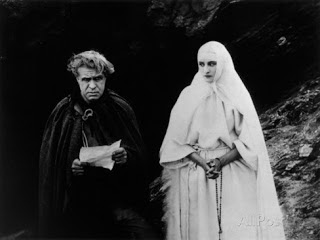Rhythmic cutting, machine movement, a progressist place, being driven by the industrialization and its hardworking inhabitants. A promising city, which would soon be one of most economically strong cities of Latin America. Or at least, that was the view of the film makers, who were clearly influenced by the film Berlin, Symphony of a City (1927).
The industrial vocation of São Paulo is fully shown in this film, alternating the movement of machines with showing its dwellers in a collective way. Perhaps the only exception to this collective mentioning of people is the historical reconstitution of Independence proclamation of Brazil, which took place at September 7th 1882. The reconstitution is rather romanticized, showing it as a act of bravery against the oppression of Portuguese colonizers, which was expressed in the rather famous expression (supposedly said by future emperor Dom Pedro I, “Independence or death”).
It is interesting that the director did not avoid showing the poorest citizens and focused on a wide range of people. It was even mentioned the fact that there were beggars in the city, although they were not directly shown and the needy citizens would be supported by the generosity of the wealthier ones.
While people were shown, it was also highlighted the means of transport (mostly cars, streetcars and trains). We can see that nearly everyone who walked on the streets were men, which involuntarily portrayed feminism in Brazil pretty accurately. Apart from the environment of elementary schools, taking and picking up children from schools and one or two women dentists in the Odontology College, we do not really see women both in outdoors environments or working out of home. Women were much more socially limited there than their counterparts in Northern hemisphere. For instance, divorce would only be officially approved in Brazil in the 1970s and, apart from being teachers and nurses, female work was not really common among middle classes and, actually, frowned upon by many people, including women themselves, who would find it shocking and against the nurturing female nature.
It is very interesting that a penitentiary was shown and portrayed as a place where inmates received a human treatment because crime was considered merely a “moral disease” and reformation was quite possible. And criminals themselves worked both in the penitentiary itself and were occupied with manual labor and treated with military discipline and it was made clear to them that discipline would be a decisive factor for them to succeed once they were reintegrated into society again. Inmates were also exposed to the Catholic church (which matches the fact that the entire Latin America was strongly Catholic at the time) and it was made clear that religion was not something mandatory, probably to avoid audiences consider that proselytism was taking place in the prison and to emphasize that the religious teaching and masses were mostly part of the attempts to improve moral values of criminals.
Another interesting thing is that the city, both among poor and wealthy citizens, was always ordered, morally organized. Even when people were having fun out of home they were never seen engaged in drinking, womanizing, or in any illegal activity. After all, they were law-abiding, honest citizens, working hard to build a better, urbanized country being grounded on the wonders of technology. Not coincidently, we see airplanes in the end of the film, one of utmost symbols of technology and progress back then. At the same time, it is implied the huge influence of exportation of coffee and coffee plantations in the income of São Paulo, which shows how agricultural São Paulo still was despite all urbanization and industries.
The role of sports and military were also praised in this film, as being both beneficial to youths (all of them men, btw) and that the military were working to build a better country with their bravery. A touch of militarism, which is too clear to be ignored and its influence was present in the overall culture of Latin American countries both in 1920s and 1930s. This is not surprising specially because São Paulo was also already at the 1920s the city that received the bulk of Italian immigrants in Brazil and Mussolini's fascism was already a nasty reality in Italy since 1922.










